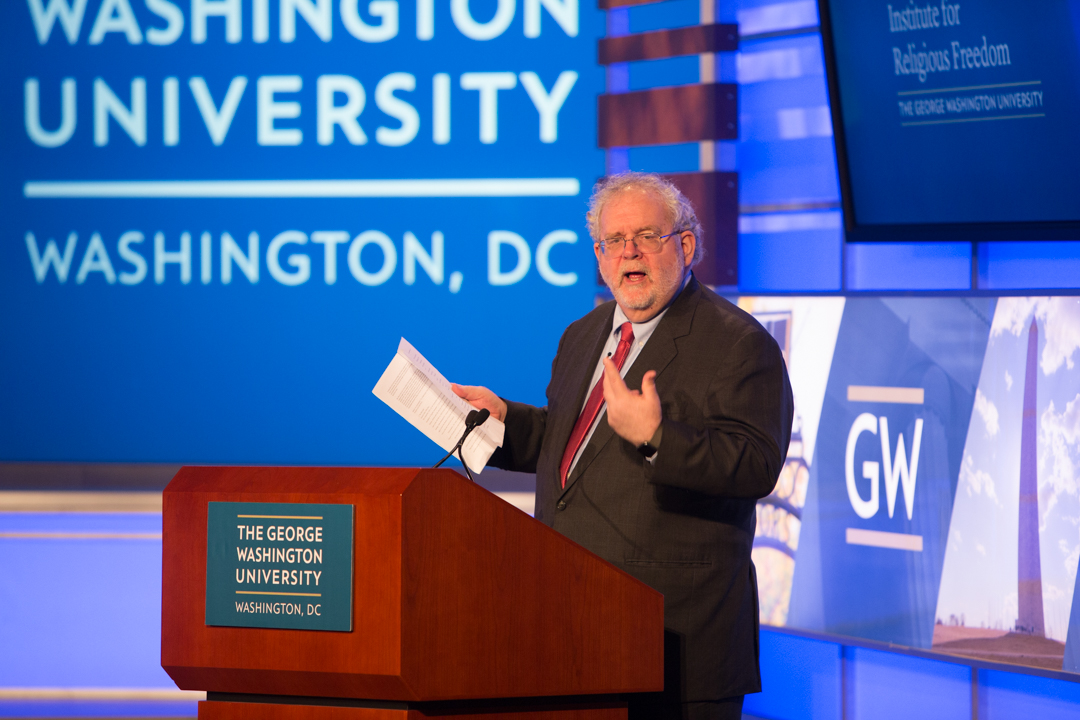The recent news about Muslim Americans who raised more than $100,000 to repair a Jewish cemetery that was the target of an anti-Semitic attack is a perfect example of the type of religious tolerance for which George Washington stood.
“This is exactly the kind of country, the kind of action that George Washington had in mind,” said Walter Russell Mead, a Bard College professor.
“Americans bonding together out of a sense of common devotion, to common principles, working together to fight prejudice and to maintain liberty for everyone here, irrespective of their beliefs.”
Mr. Mead’s remarks Wednesday at the sixth annual George Washington lecture were framed around George Washington’s response to the Jewish people of the Touro Synagogue in Rhode Island. They had written Washington to ask for assurance that they would be seen as equal citizens free from persecution on the basis of their religion.
Washington’s answer in the affirmative, Mr. Mead said, “resounded through American history.”
Several religious, economic and social and political factors led to increased religious tolerance throughout the country’s history, Mr. Mead added, but one of the most important factors was the prevalence of so many different religions and the belief that no single religion would be able to conquer all the others.
Washington had a keen understanding of this as well as the general sentiment of tolerance of those in the country, Mr. Mead said.
He added later: “George Washington expressed in his day a set of principles about how people can live together under conditions not only of true civil equality but fraternity, even though they have different ethnic roots, different religious beliefs, different cultural ideas.”
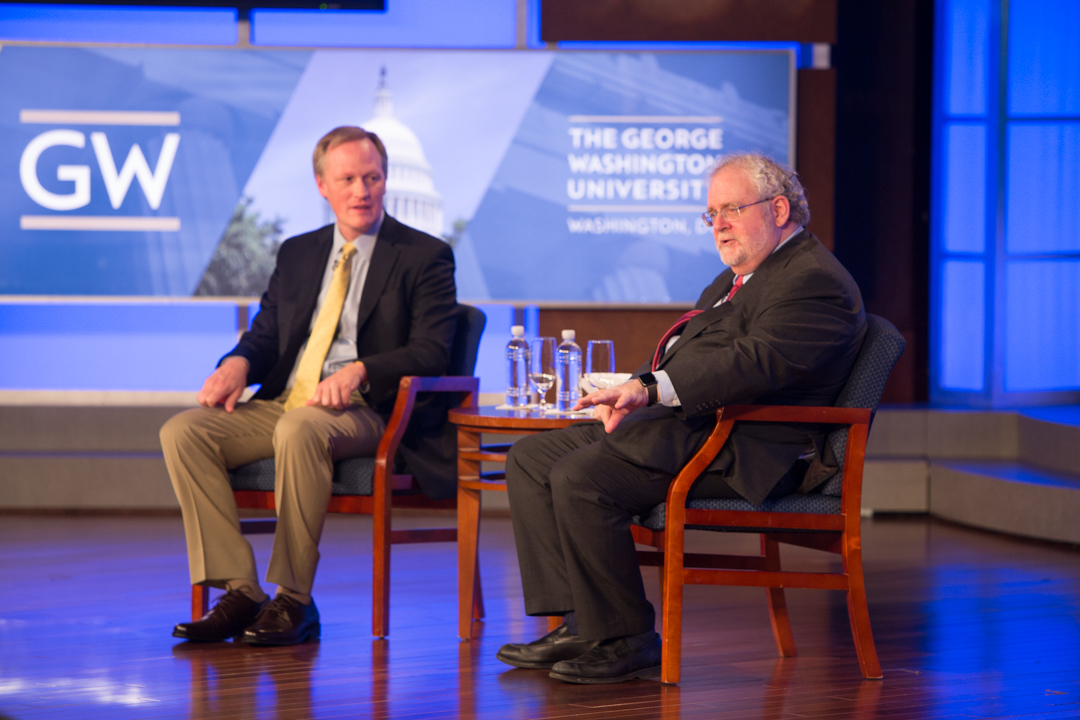
Denver Brunsman, left, an associate professor of history who teaches a class on George Washington, moderated a discussion with Mr. Mead after his remarks. (William Atkins/GW Today)
Mr. Mead is the James Clarke Chace Professor of Foreign Affairs and Humanities at Bard College and previously taught American foreign policy at Yale University. He is also the editor-at-large of The American Interest magazine and a non-resident distinguished scholar at the Hudson Institute.
The lecture—“To Bigotry No Sanctions: George Washington’s Legacy of Religious Liberty and the U.S. Relationship with Israel and the Jewish People”—was a partnership between the Loeb Institute for Religious Freedom, the Department of History and University Events.
George Washington President Steven Knapp, who recalled his first visit to the Mount Vernon Estate shortly after becoming president in 2007, said the subject of Wednesday’s lecture was an “extremely timely matter to be discussing here on our campus in the heart of the nation’s capital.”
Also on Wednesday, Dr. Knapp, along with students, faculty and staff made an annual trip to George Washington’s Mount Vernon Estate to tour the grounds and lay a wreath at Washington’s tomb. Dr. Knapp provided remarks about the legacy of the university’s namesake and later said the trip was a good opportunity for students to remember the university’s special connection to George Washington.
Denver Brunsman, an associate professor history who teaches a class on George Washington, said the month of events honoring George Washington would be one of Dr. Knapp’s “greatest legacies.”
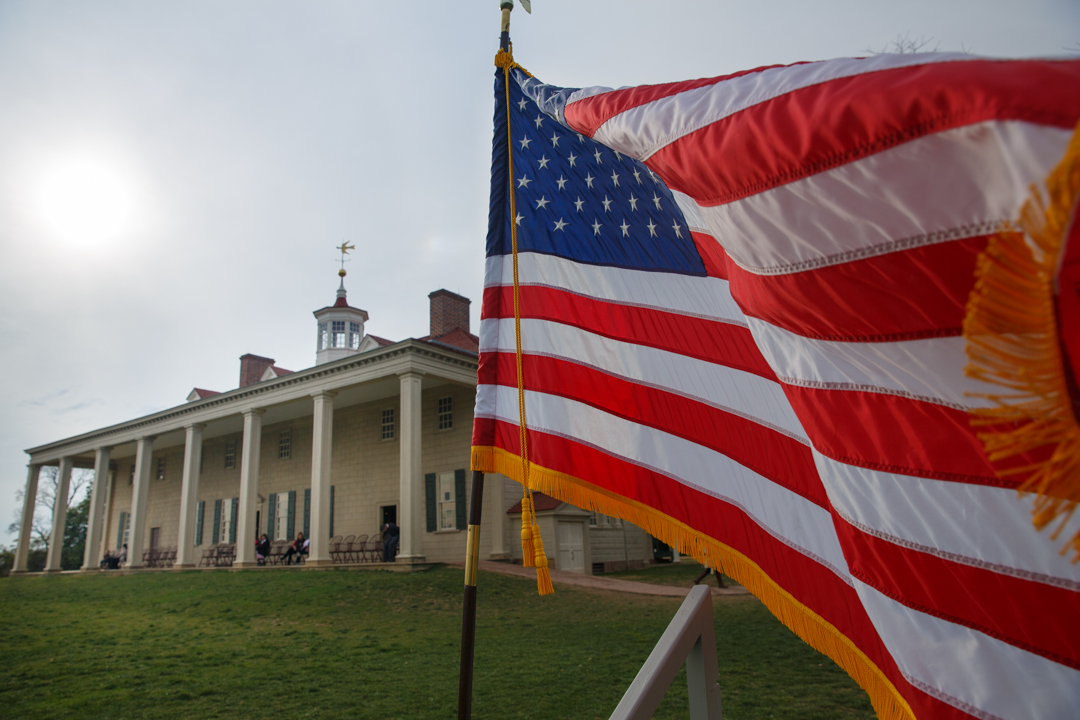
Mount Vernon Estate is shown on Wednesday. (William Atkins/GW Today)
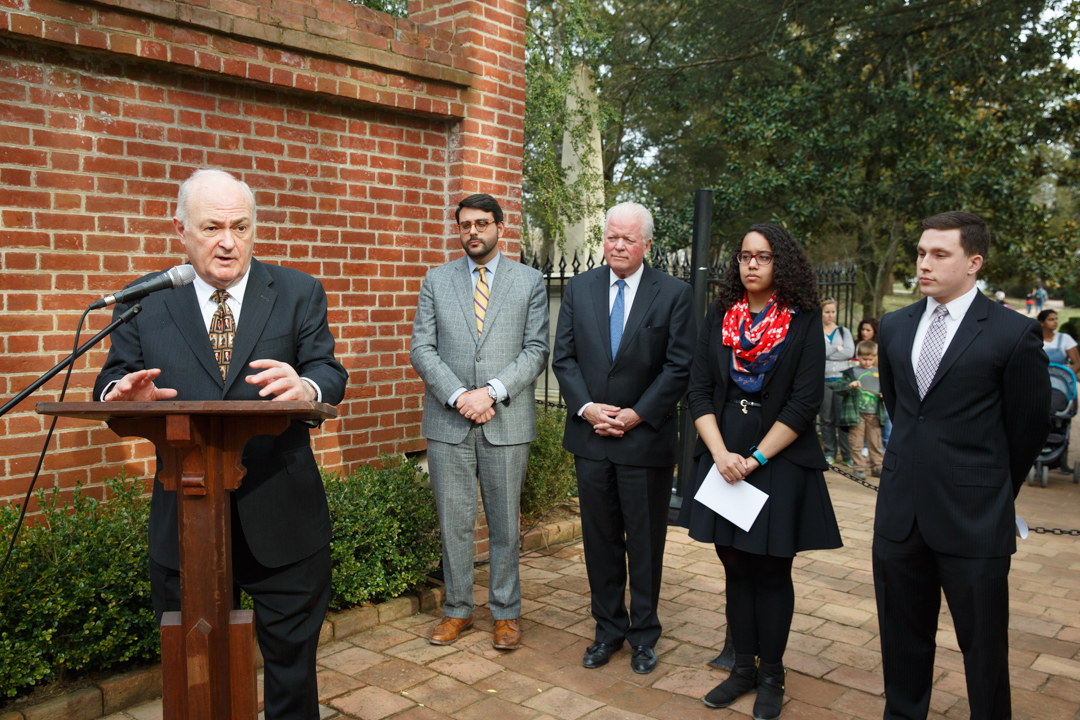
Dr. Knapp delivers remarks outside of George Washington's tomb at his Mount Vernon Estate on Wednesday. (William Atkins/GW Today)
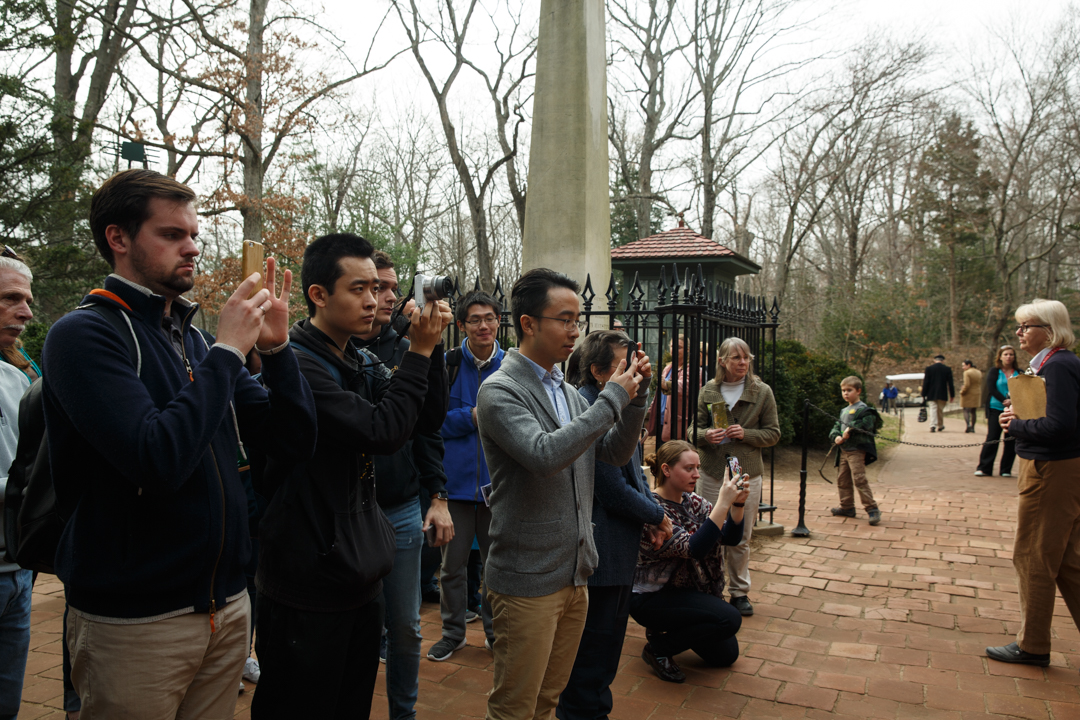
GW community members had the opportunity to visit the estate, tour the grounds and see Washington's tomb. (William Atkins/GW Today)

George Washington's tomb is shown with a wreath on Wednesday. (William Atkins/GW Today)
These events, as well as others earlier this month, were part of Celebrate GW, a series of events held in recognition of the university’s founding and Washington’s birthday.


